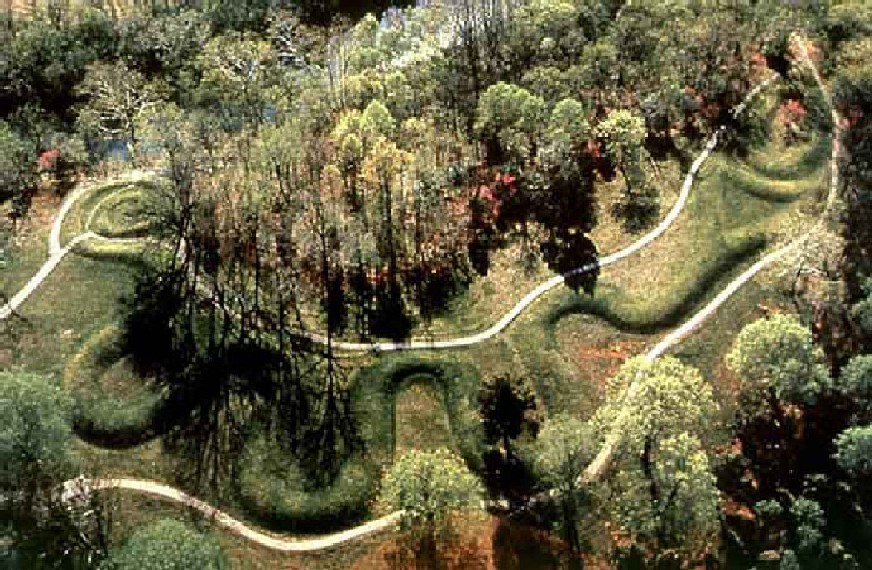Chaco Canyon, New Mexico
Early Civilizations:
Complex Societies of the New
and Old Worlds
Dr. Kathryn Denning
Anth 2150, Sept 2007 - Apr 2008
22 Jan 2008
Welcome back!
Plan for the day
1 Announcements.
N.B. Quiz on Jan 23 in tutorial... on Chapters 12, 13, 14. See here for full review guidelines.
Reading for Next Week, Jan 31 - Ancient Egypt Part 1
Review Fagan pp 337-348
Explore web feature on Ancient Egypt thoroughly: www.bbc.co.uk/history/ancient/egyptians/
Explore: www.digitalegypt.ucl.ac.uk/Welcome.html
Briefly explore Hierakonpolis: www.archaeology.org/interactive/hierakonpolis/index.html
The museum assignment - online now. Note: The due date is now February 27th (instead of Feb 20th).
2 Lecture
Complex Societies and Civilizations of the New World: An Introduction
Film: "The Mystery of Chaco Canyon"
Complex Societies and Civilizations of the New World: An Introduction
Reading for This Week, Jan 22, was....
Fagan Ch 14 "Maize, Pueblos, and Mound Builders"
Prehistory of Ontario www.adamsheritage.com/pre/preont1.htm (read expanded versions linked from left margin of that page)
Keep exploring this site as we examine ancient cultures: www.thebritishmuseum.ac.uk/compass/index.html
ANCIENT NORTH AMERICA
Societies of great complexity but generally not designated "civilizations" (arbitrary?)
Gradual intensification, sedentism, and increasing population density...e.g. places like Koster and NW Coast ... could sustain considerable complexity
Others... adoption of agriculture... and specifically of maize (corn), which had been domesticated in Mexico and gradually brought north. Key Study: Richard MacNeish, Tehuacan valley shows the domestication of maize
Recalling that agriculture is generally key to development of complex civs and states...
Centres of native plant domestication in Americas:
Highland and lowland Central America - maize, beans, squash, sweet potatoes
Highlands of Central Andes for root crops like potatoes and manioc
Southeastern United States for pep squash, sunflowers, other local plants
Ancient Ontario provides a useful example of complex New World society.
Compare the technology, subsistence, and settlement types of Ontario during these periods: PalaeoIndian, Archaic, Late Woodland. www.adamsheritage.com/pre/preont1.htm

Links:
Prehistory of Ontario www.adamsheritage.com/pre/preont1.htm
Iroquoian Longhouse: http://www.rom.on.ca/digs/longhouse/
Seed-Barker site: http://www.rom.on.ca/digs/seedbarker/ http://www.chass.utoronto.ca/anthropology/Exhibit/seedbark.htm
Other e.g.s:
Pueblo peoples (including Hohokam etc) - "ancestral Pueblo" formerly known as "Anasazi"... Chaco Canyon and surrounding areas -- essentially apartment buildings but likely a primarily ritual function... e.g. Pueblo Bonito http://www.colorado.edu/Conferences/chaco/tour/bonito.htm Amazing astronomy... http://www.traditionsofthesun.org/
Chaco Canyon
Hopewell peoples http://www.nps.gov/hocu/ , and other moundbuilders of the Northwest - Great Serpent Mound, 3000 - 1300 BP ... immense effigy mound... http://www.mnsu.edu/emuseum/archaeology/sites/northamerica/serpent.html

n.b. Also mounds in Ontario -- including Serpent Mound near Peterborough, http://www.serpentmoundspark.com/ (burial mounds)
Cahokia and the Mississippian http://www.cahokiamounds.com/virtual_tour.html
Thought experiment:
Consider the royal sacrificial burials of Shang China, Ur, and Cahokia. Why do you think three cultures so far apart, with no direct connection, would all have human sacrifices at elite burials?
Mass human sacrifice is a characteristic of chiefdom and state level societies.
Reason? Power... as Fagan outlined earlier.
e.g. economic power - sacrificed people might be slaves, who didn't even own themselves
e.g. social/ideological power - people would go along with it because it served a common goal
e.g. political power - people might not be able to say no to a ruler's demands
MESOAMERICA
Mesoamerica is a spatial region/geographic area, but also a region of cultural commonalities... cultural and linguistic. Long history of interaction between social groups in the region.
compare to the term "Western civilization"
Time
http://www.famsi.org/research/pohl/chronology.html
http://www.ancientmexico.com/content/timeline/
Timelines of ancient art and culture: specifically Mexico www.metmuseum.org/toah/ht/07/cam/ht07cam.htm
Space:
http://www.ancientmexico.com/content/map/index.html
maps here: http://www.famsi.org/research/pohl/index.html
ARCHAEOLOGICALLY IDENTIFIABLE DEFINING TRAITS OF MESOAMERICA
subsistence - corn, beans, squash, horticulture, raised fields, cacao, amaranth, maguey
long-distance exchange - obsidian, cacao, jade
cosmology and ritual
- significant numbers 4, 5, 7, 9, 13, 20
- shared calendars: solar year of 18 months of 20 days plus a set of 5 final days. 260 day ritual cycle of 13 day names combined with 20 numbers.
- use of writing and positional mathematics to record astronomy and calendar
- ritual warfare, special warrior costumes, human sacrifice
- specialized architecture for ritual... ball courts, temples, observatories

Nezahualcoyotl, ruler of Texcoco, 1431-1472. (Codex Ixtlilxochitl).
Note the obsidian blade in his hand.
Aztec lithics/weaponry: http://lithiccastinglab.com/gallery-pages/2003decemberaztecbifacespage1.htm
social stratification
status expressed in costumes, gendered dress, ornaments e.g. lip plugs, ear plugs
(labret e.g. from South America: http://personalwebs.coloradocollege.edu/~ctorresrouff/other/labret.html, nice Mesoamerican earplugs on this figure: http://www.jqjacobs.net/mesoamerica/images/izapa1.jpg )

Maize Deity (Chicomecoatl),
15th–early 16th century
Mexico; Aztec. Basalt; H. 14 in. Metropolitan Museum of Art.
Olmec (1500-500 BC)
Ancient Maya (before 1000 BC to AD 1519)
Classic Maya (AD 300-900)
Teotihuacan (200 BC - AD 750)
Toltecs (AD 650-1200)
Aztec (AD 1200-1521)
The skull of the Smoking Mirror, British Museum. Aztec/Mixtec, 15th-16th century AD "This mask is believed to represent the god Tezcatlipoca, one of the Aztec creator gods. He was also the god of rulers, warriors and sorcerers. His name can be translated as 'Smoking Mirror'. In fact, in many depictions during the Postclassic period (A.D. 900/1000-1521) his foot is replaced by a mirror." - BM
Teotihuacan http://www.famsi.org/research/pohl/sites/teotihuacan.html
n.b. the symbolic landscape and the residential areas.
Video: The Mystery of Chaco Canyon (2003, 56 minutes)
- sites of Chaco Canyon, New Mexico, including Pueblo Bonito
As you watch, consider:
- why were the sites there? what were they there for? what did the roads mean? why the astronomical emphasis? why did they seal up the sites when they left?
- Native descendants' and archaeologists' perspectives on the sites of Chaco Canyon - convergences and contrasts in those perspectives